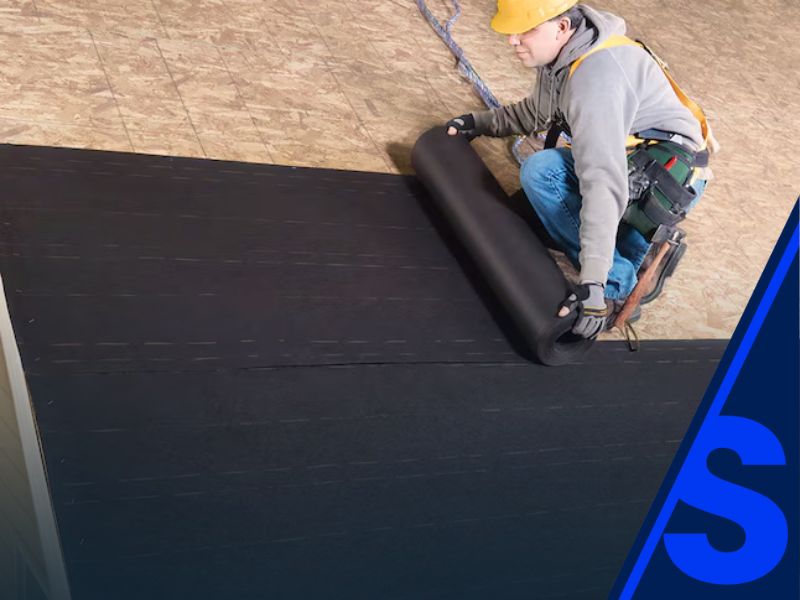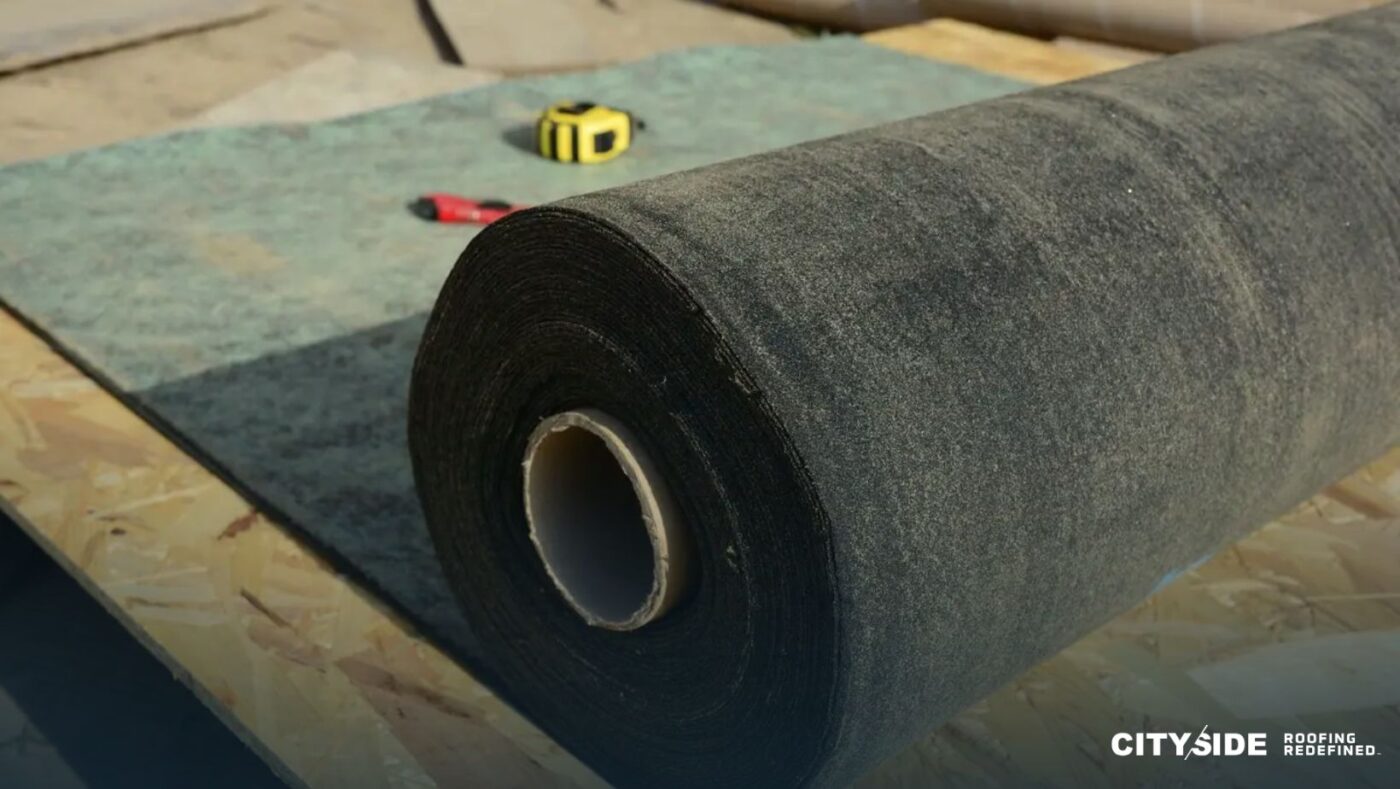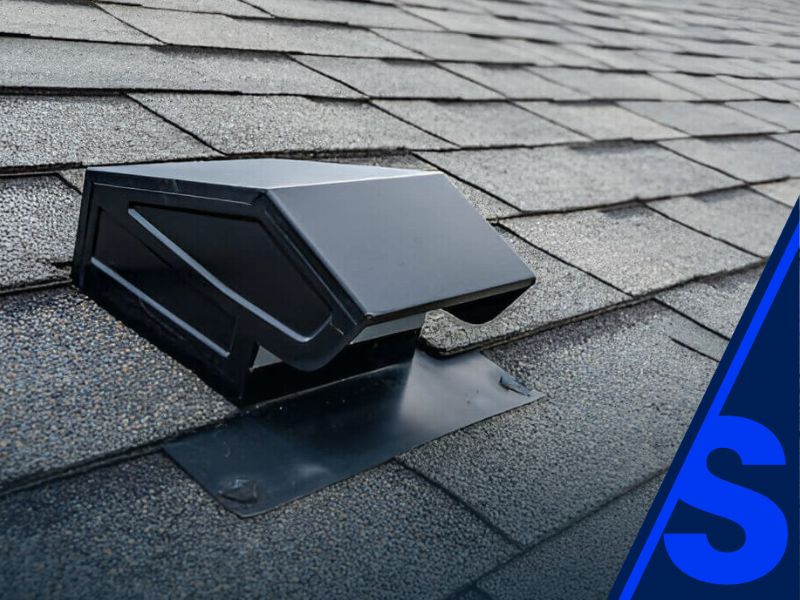Table of Contents
Selecting the right roof underlayment is one of the most critical steps in any new construction roofing project. Underlayment acts as the protective layer between the roof deck and the roofing material, providing waterproofing, dimensional stability, and additional structural assurance. Among the options available to builders, fiberglass felt roof underlayment continues to play an important role in delivering reliable performance across diverse project types.
This article explains the role of fiberglass felt roofing underlayment, compares it with synthetic alternatives, and provides guidance for builders evaluating project requirements, code compliance, and long-term performance. It also explores how CitySide Roofing supports builders with automated QC, ERP integration, and builder-first processes to ensure consistent, code-aligned installations.
What is roof underlayment and why does it matter in new construction?
Roofing underlayment is a foundational component of any roof system. Installed directly above the roof deck, it acts as a secondary barrier beneath shingles, tiles, or other roofing materials. Its role is to protect the structure against moisture infiltration during and after construction.
For builders, underlayment is not only a water management layer but also a safeguard during the construction phase. It provides temporary weather protection before final roofing material is installed and ensures compliance with building code requirements. Without proper roof underlayment, the roof deck and other critical areas remain vulnerable to moisture, wind-driven rain, and premature failures that can delay project schedules.
Types of roofing underlayment available to builders
Builders typically choose from three primary underlayment types:
- Asphalt-saturated felt: A traditional material, produced by saturating paper or fiberglass with asphalt.
- Fiberglass felt underlayment: A reinforced felt product with fiberglass layers for added stability and tear resistance.
- Synthetic underlayments: Polypropylene or polyethylene-based products designed for higher performance and longer lifespan.
Each material has its place depending on budget, climate zone, project scope, and roofing material specifications. The right selection ensures smooth installation, compliance with local codes, and operational efficiency. For guidance on builder-focused roofing solutions, see CitySide Roofing’s Builder Services.
What makes fiberglass felt roof underlayment unique?
Fiberglass felt roof underlayment is manufactured by saturating fiberglass matting with asphalt. This reinforcement provides better tear resistance, dimensional stability, and reduced wrinkling compared to traditional asphalt-saturated felt.
The material lays flatter during installation, ensuring shingles align properly and minimizing the risk of uneven courses. Fiberglass felt is also less absorbent than older felts, allowing it to maintain integrity even when exposed briefly during construction delays. For builder projects where timelines can shift, this stability reduces rework and keeps projects on schedule.
Synthetic vs felt underlayment: what should builders consider?
The debate of synthetic versus felt underlayment often comes down to balancing performance with cost. Synthetic roofing underlayment offers several clear benefits:
- Lightweight and easier for crews to handle.
- Covers more square footage per roll, reducing installation time.
- Provides enhanced tear resistance and traction, improving crew safety.
However, fiberglass felt remains a strong choice in projects where cost control, compatibility with asphalt shingles, and proven performance are priorities. While synthetic materials are often selected for high-performance or extended warranty projects, fiberglass felt provides dependable results for builders managing multiple builds simultaneously.
CitySide’s integration of ERP scheduling systems and automated QC tracking ensures that whether builders select synthetic or fiberglass felt, installation is consistent across projects.
Advantages and limitations of felt underlayment
Fiberglass felt has several clear advantages for builders:
- Cost-effective compared to synthetic alternatives.
- Time-tested reliability with decades of use in steep-slope roof applications.
- Compatibility with standard shingles and roofing materials.
Limitations include:
- Heavier rolls that can be more labor-intensive to handle.
- Susceptibility to tearing in high winds if left uncovered for extended periods.
- Shorter UV resistance compared to synthetics, making schedule coordination critical.
Builders should weigh these factors against construction timelines, climate conditions, and building code demands when specifying underlayment.
When to use fiberglass felt in builder projects
Fiberglass felt underlayment is best suited for:
- Steep-slope roofs requiring dimensional stability during shingle installation.
- Projects prioritizing affordability while meeting code and structural protection needs.
- Situations where asphalt shingles are the roofing material of choice.
In Florida, where codes demand stricter wind and water management practices, fiberglass felt can serve as a practical balance between traditional felt and modern synthetics. It provides structural protection while helping builders manage budgets and maintain compliance.
Installation considerations for builders
For successful application, builders should follow established best practices:
- Start with a clean roof deck free of debris.
- Roll out fiberglass felt horizontally, ensuring proper overlap at each course.
- Use cap nails or staples to secure the underlayment in place.
- Reinforce valleys, eaves, and penetrations with peel-and-stick membranes or flashing as required by building code.
Proper sequencing ensures the underlayment integrates with other roofing materials, reducing the risk of water intrusion and avoiding costly callbacks. CitySide’s automated QC process captures installation details in real time, giving builders documented assurance of compliance.
Asphalt-saturated felt vs fiberglass felt
Traditional asphalt-saturated felt has long been the industry’s standard, but fiberglass felt enhances performance with reinforcement. Fiberglass felt resists wrinkling, offers greater tear resistance, and provides stability during construction.
For builders managing active job sites with high crew traffic or weather delays, fiberglass felt outperforms traditional felt by maintaining integrity until final roof coverings are installed.
Synthetic roofing underlayment: always better?
Synthetic underlayments are increasingly popular, offering superior UV resistance, lighter rolls, and extended exposure windows. These characteristics make them attractive in large-scale builder operations.
However, not every project requires the highest-performance option. For cost-sensitive builds or projects with shorter construction timelines, fiberglass felt remains an effective solution. CitySide works with builders to align underlayment choices with project schedules, code compliance, and long-term performance goals.
Energy, moisture, and code considerations
Underlayments differ in how they handle moisture, vapor permeability, and heat. In humid climates like Florida, vapor-permeable products may reduce condensation risk within the roofing system. For cold climates, pairing underlayment with ice and water barriers is standard practice.
CitySide Roofing ensures all underlayment installations align with energy and moisture codes through ERP-integrated workflows. Builders receive digital compliance records, eliminating guesswork and streamlining inspections.
How builders should select the right underlayment
When specifying underlayment, builders should evaluate:
- Roofing material compatibility (shingle, tile, or metal).
- Roof slope and geometry.
- Regional climate and code requirements.
- Project timelines and exposure duration.
- Budget and warranty expectations.
CitySide Roofing partners with builders to balance these factors while leveraging technology to ensure installations meet performance standards consistently across developments.
Final takeaways
Roof underlayment is a cornerstone of every roof system, and builders must carefully evaluate their options to balance performance, cost, and compliance.
Key points to remember:
- Fiberglass felt roof underlayment offers improved stability and tear resistance compared to traditional felt.
- Synthetic underlayments provide enhanced performance but at a higher cost, making fiberglass felt a practical option for cost-sensitive builds.
- Installation quality, overlap precision, and code alignment are essential for underlayment performance.
- CitySide Roofing supports builders with automated QC, ERP-driven workflows, and builder-specific expertise to ensure long-term success.
For builder-focused roofing solutions that combine proven materials with technology-driven consistency, contact CitySide Roofing today.






